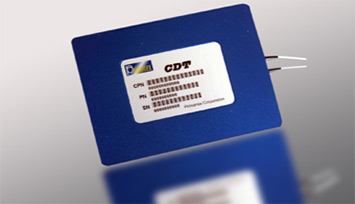Primanex provides dispersion compensation products for fiber optics communication systems. The all sorts of accumulative dispersion in the optical networks will expand the optical pulse in the time domain, increase bit error rate (BER) and lower down the OSNR (optical signal to noise ratio), hence is one of the dominant bottlenecks limiting the effective transmission distance. The three dominant fibers that have been deployed in the systems are G.652, G.653 and G.655, in which G.652 is widely deployed in early days, has zero-dispersion at 1310nm, but has dispersion of ~17ps/nm/km at EDFA window of 1550nm. To better exploit the low loss and high gain EDFA window, G.653 fiber shifts its zero-dispersion to 1550nm. But with the increasingly stronger optical power to allow longer transmission distance without regeneration, the zero-dispersion at 1550nm makes the non-linear effects such as four-wave mixing considerably damaging for WDM transmission. G.655 is therefore promoted to balance dispersion against non-linear effects. It shifts zero-dispersion outside of EDFA window, and leaves moderate dispersion of 2~6ps/nm/km at 1550nm. Besides, all sorts of optical components such as WDM and interleavers etc are deployed in the optical networks, and inevitably will accumulate dispersion. Most importantly among all of the optical components, ROADM transparently and dynamically switches wavelength from one node to another, hence brings dynamically changing dispersion for any specific wavelength channel.
Upon consideration of facts that all kinds of fibers coexist in modern optical networks, and that all sorts of optical components including ROADM are deployed along the network path, dynamically compensating dispersion then becomes a MUST especially for high-speed networks such as 10Gbps, or 40Gbps. There are three types of technologies to compensate dispersion: dispersion compensation fiber (DCF), fiber bragg grating (FBG), and GT-type etalon. DCF is to compensate for the fixed accumulative dispersion after long transmission distance, hence is non-tunable, has continuous wavelength bandwidth and relatively large loss; FBG is mainly used at receiver side, can be tuned, compensates in-band, and has relatively small loss. However, FBG has typical filtering structure similar to narrow-band WDM filters, hence will block any non-ITU wavelengths; GT-type etalon is an increasingly dominant new technology, which is tunable, compensates in-band, has comparable loss as FBG, and is transparent in wavelength. That is to say, it can be used for any ITU wavelength without reconfiguration. A PLUS feature of GT-type etalon is that it is a mathematically all-pass filter. Any wavelength, no matter whether it is on ITU-grid or not, will have same insertion loss. This feature enhances system suppliers' design flexibility.
 |
TDCM TDCM is essential for the next generation fiber optic communication system. It is a solution for multiple-channel or single chroma... |